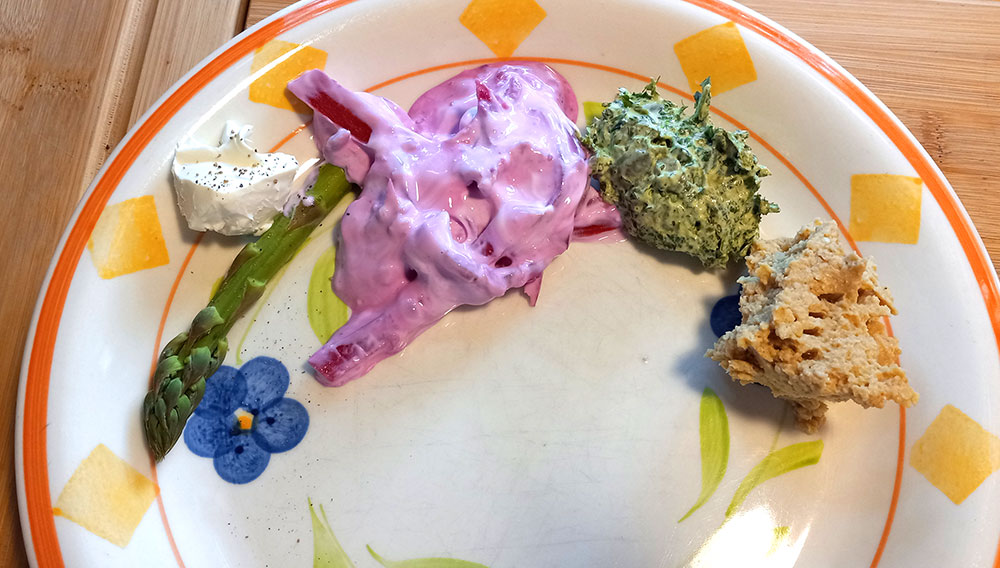There are numerous health benefits to eating more Lacto-fermented vegetables and fruits. Make some easy Fermented Beet Salad and add a healthy condiment side dish to any meal.
A Short List of Benefits.
- Protects your Immune system: Fermented foods are probiotic-rich, with good bacteria that help strengthen the gut lining. You may have heard the recent buzz: “Health starts in the gut!”
- High in vitamins and minerals.
- Aid Digestion by breaking down nutrients for easier absorption.
- Phytochemicals present in fermented foods promote brain health.
- Weight Management: Increased digestion efficiency helps maintain a healthy body weight.
- Good for your Heart health: fermentation can help lower blood pressure and “bad” cholesterol.
- Fermentation Preserves vegetables and fruits so they last longer and stay crispy.
Eating Fermented Food as Condiments Adds Taste and Nutrition.
Recently, I was out of cabbage, one of the main ingredients I most often use in a fermented vegetable base, so I made one with what I had: beets, carrots, and red onions. It was so delicious and easy to use as a salad base for many meals, and it saved me time. Try it; you may love it, too.
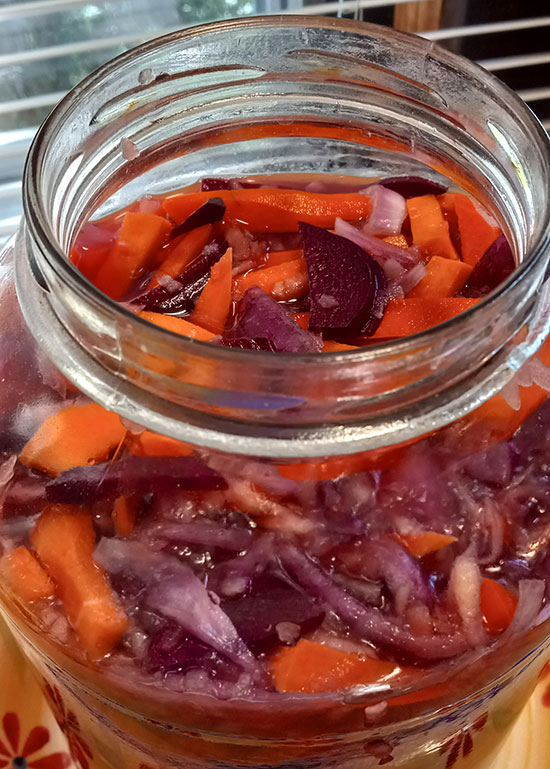
The Perfect Fermented Beet Condiment.
Easy to make with Beets, Red Onions, Carrots, Sweet Potato, and Grated Apple.
Photo 1: The photo shows the Beet Condiment with the chopped vegetables and brine. It can be eaten like a salad immediately, but the fermentation benefits appear in about 3 days. Experiment with the degree of sourness you like. We find 3 days is plenty as the fermentation is dramatically slowed in the fridge, but it does continue somewhat. Refrigerate after 3 to 5 days to eat as is or in recipes. It will last for 30 days or more. Use leftover ferment that is too strong to eat alone in stir-fries, soups, or sauces instead of salt to add a distinctive and delicious flavor profile.
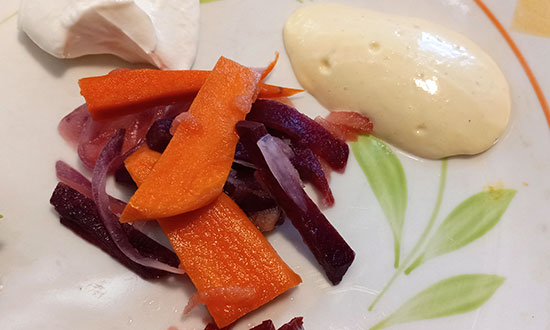
Close-up of 1-day Beet Ferment
A Lacto-Fermented Beet Salad that saves you time meal after meal.
Make sure to use very clean jars and utensils. Sterilizing the jars is a good idea. Don’t use metal containers to store in or ferment.
Wash your hands well before mixing the vegetables in a bowl before putting them in a glass jar. I make sure the vegetables are covered with the juice and push them down under morning and night. If your jar is too full to cover with the juice at the beginning, just use some of it fresh in a salad. I have never had any go bad, but if you smell something rotting by any chance, just throw it all out and start over. Use the freshest produce you can find. Enjoy. Your gut, which has multi-flora and fauna that contribute to digestion, will thank you!
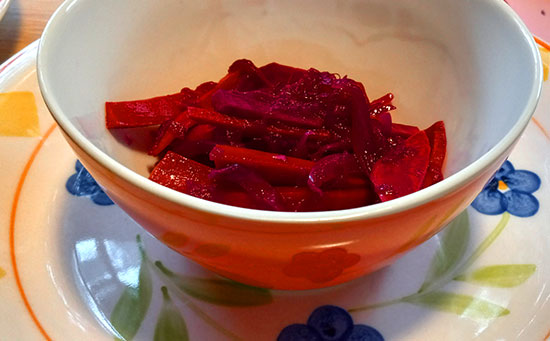
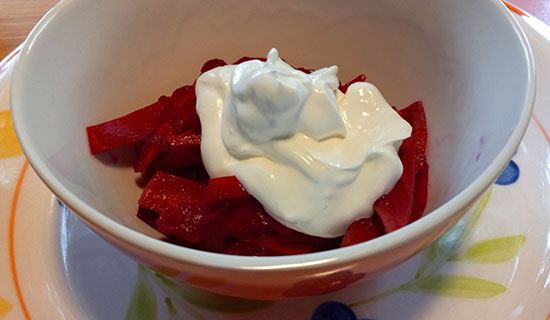
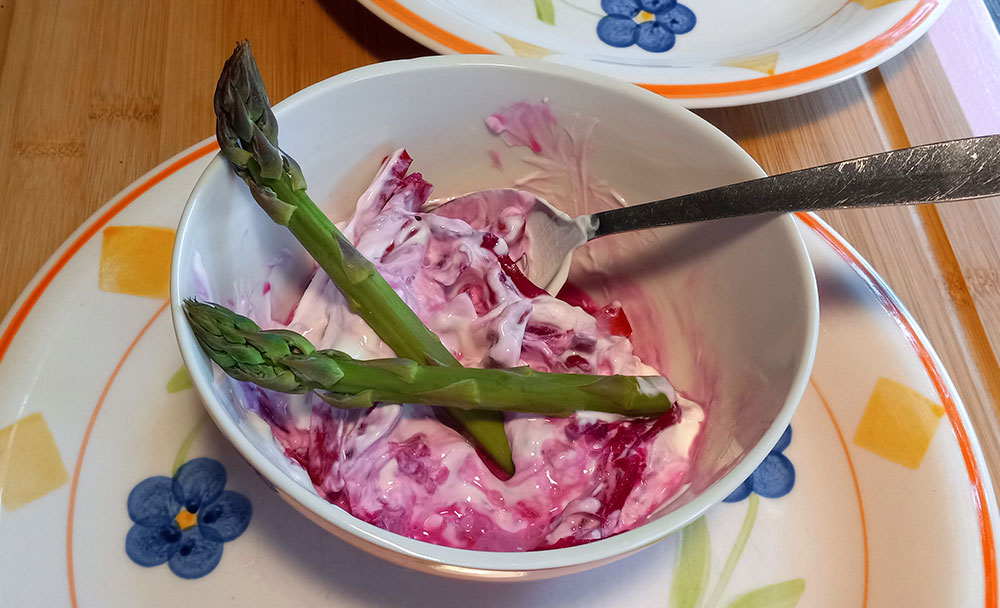
The Basic Fermented Beet Salad can be eaten alone or with any combination of chopped vegetables you choose. Here are some interesting combinations.
- Add chopped Avocado
- Add sliced cucumber
- Be creative.
Making Condiments Ahead = Easy Sides
